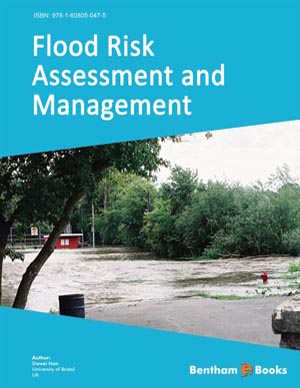About Book
Introduction
Floods are devastating natural disasters with a significant impact on human life and the surrounding environent. Flood Risk Assessment and Management should serve as an Ideal textbook on analytical flood risk assessment and management, and is intended for lecturers, undergraduates and postgraduates in civil engineering, geography, environmental science, earth sciences, and related disciplines. This book is based on the lecture notes taught at the University of Bristol to students undertaking a Masters course in civil engineering. All chapters are supplemented with challenging questions, answers and solutions.
Indexed In
Table of Contents
Relevant Probability Concepts
Page: 5-14 (10)
Author: Dawei Han
DOI: 10.2174/978160805047511101010005
PDF Price: $15
Statistics in Hydrology
Page: 15-22 (8)
Author: Dawei Han
DOI: 10.2174/978160805047511101010015
PDF Price: $15
Flood Frequency Analysis
Page: 23-33 (11)
Author: Dawei Han
DOI: 10.2174/978160805047511101010023
PDF Price: $15
Frequency Curve Fitting
Page: 34-43 (10)
Author: Dawei Han
DOI: 10.2174/978160805047511101010034
PDF Price: $15
Historical and Palaeo Floods
Page: 44-51 (8)
Author: Dawei Han
DOI: 10.2174/978160805047511101010044
PDF Price: $15
Regional Frequency Analysis
Page: 52-57 (6)
Author: Dawei Han
DOI: 10.2174/978160805047511101010052
PDF Price: $15
Pooled Flood Frequency
Page: 58-64 (7)
Author: Dawei Han
DOI: 10.2174/978160805047511101010058
PDF Price: $15
Ungauged Catchments
Page: 65-70 (6)
Author: Dawei Han
DOI: 10.2174/978160805047511101010065
PDF Price: $15
Areal Rainfall
Page: 71-79 (9)
Author: Dawei Han
DOI: 10.2174/978160805047511101010071
PDF Price: $15
Rainfall Runoff Modelling
Page: 80-86 (7)
Author: Dawei Han
DOI: 10.2174/978160805047511101010080
PDF Price: $15
Rainfall Frequency Analysis
Page: 87-96 (10)
Author: Dawei Han
DOI: 10.2174/978160805047511101010087
PDF Price: $15
Probable Maximum Precipitation and Probable Maximum Flood - PMP and PMF
Page: 97-102 (6)
Author: Dawei Han
DOI: 10.2174/978160805047511101010097
PDF Price: $15
Flood Hazard Mapping
Page: 103-106 (4)
Author: Dawei Han
DOI: 10.2174/978160805047511101010103
PDF Price: $15
Nonstationary Time Series
Page: 107-114 (8)
Author: Dawei Han
DOI: 10.2174/978160805047511101010107
PDF Price: $15
Coastal Flooding
Page: 115-121 (7)
Author: Dawei Han
DOI: 10.2174/978160805047511101010115
PDF Price: $15
Real-Time Flood Forecasting
Page: 122-127 (6)
Author: Dawei Han
DOI: 10.2174/978160805047511101010122
PDF Price: $15
Flood Risk Mitigation
Page: 128-134 (7)
Author: Dawei Han
DOI: 10.2174/978160805047511101010128
PDF Price: $15
Weather and Climate Change
Page: 135-141 (7)
Author: Dawei Han
DOI: 10.2174/978160805047511101010135
PDF Price: $15
Self Test Questions
Page: 142-147 (6)
Author: Dawei Han
DOI: 10.2174/978160805047511101010142
PDF Price: $15


 Download PDF Flyer
Download PDF Flyer